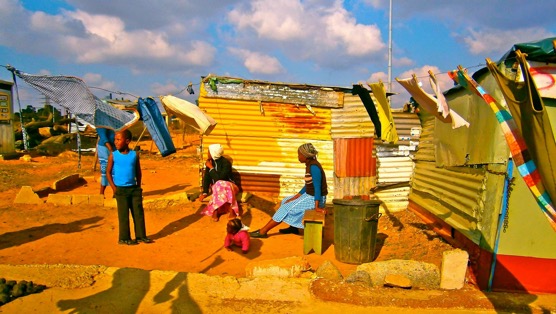Ubuntu: The Spirit of Soweto
Photos by Maggie ParkerThe luxury sedan seemed out of place amid the tiny tin houses that make up Motswaledi, Soweto’s most impoverished area. However, the driver, Joe Motsogi, assured our tour group we wouldn’t offend the residents. He would know. A resident of Soweto for over 60 years and the owner of JMT Tours, Joe is a Soweto expert. I know what you’re thinking. Can’t a successful business owner like Joe now get out of Soweto, the famously poverty-stricken settlement in Johannesburg, South Africa? Yes, he can. But he hasn’t, just like many of the neighborhood’s loyal residents.
Driving through Soweto, we asked Joe what it was like growing up here. He answered bluntly. There is no way to spin Soweto’s history. According to Joe, Soweto, which has a population of 1 million, exists because black South Africans were removed from their land during Apartheid and forced here with nothing.
“During Apartheid, there was a lot of civil unrest in the community—raids, riots, protests, violence and destruction,” Joe recalled. Not to be forgotten in this hatred and instability, Soweto was also the site where Hector Pieterson, one of the first victims of the 1976 Student Uprising, was viciously killed by policemen during the protest.
But, 20 years after Apartheid, the negative emotions have dissipated.
How is it possible to not hold grudges? How can anyone choose to live in a place steeped in such horrid memories and where friends and family members were killed fighting for their freedom? One word: “Ubuntu,” Joe told us, and then translated, “It means humanity or oneness.” The word is part of the Zulu phrase “Umuntu ngumuntu ngabantu,” which literally means, “a person is a person through other people.” The African Ubuntu philosophy is based on the idea that community is necessary to build society and we have to work together.
Joe explained this before stopping in front of a hut hidden behind clotheslines on a dirt road. He assured us we’d be safe and that residents welcome visitors. Although they were tortured and segregated by people that looked like me only 20 years ago, they were above resentment. Ubuntu.

-

-

-

-

-

-

-

-

-

-

-

-

-

-

-

-

-

-

-

-

-

-

-

-

-

-

-

-

-

-

-

-

-

-

-

-

-

-

-

-








































